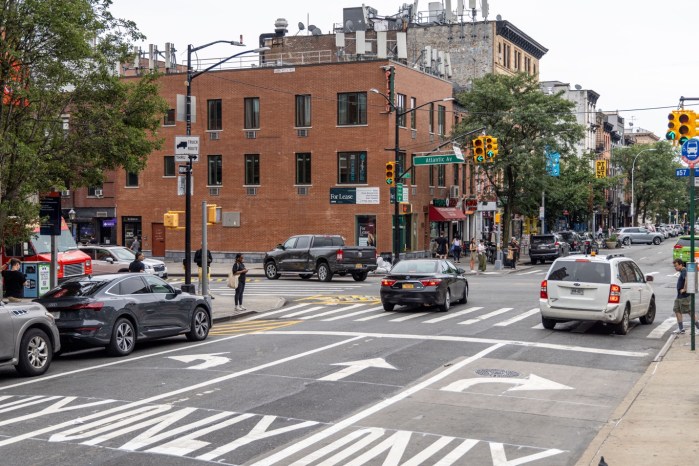Brooklyn now officially has two toxic bookends, thanks to a federal move to designate the Newtown Creek as a Superfund site — the first step in what could be a decade-long clean-up for which the city of New York is partly responsible.
The move, which Environmental Protection Agency officials announced on Monday, follows the agency’s declaration of the Gowanus Canal as a similarly fetid waterway in March. The preliminary clean-up should begin next spring, said Environmental Protection Agency regional director Judith Enck.
“There’s a range of toxic substances,” Enck said, explaining why the feds are getting involved after more than a century of mostly unmitigated dumping into the 3.8-mile industrial waterway that forms Brooklyn’s northern border with Queens.
Most of the toxins are in the form of pesticides, heavy metals, and volatile organic compounds in the creek’s contaminated sediment.
“Our action today will ensure that Newtown Creek will achieve a thorough clean-up,” Enck added. “People understand that this is a heavily polluted waterway, but people still fish in the creek and consume the fish they catch and people also go kayaking in the creek.”
EPA officials said that it could take longer — and cost more — to clean the creek than the Gowanus Canal, which is currently looking at a 10-year, $300- to $500-million clean-up.
“It’s likely to be more, even significantly more,” said Walter Mugdan, an agency environmental planning director. “It’s about twice as long, a wider waterway. There’s more sediment to be dealt with than the Gowanus.”
Federal officials said that several companies have already been identified of their responsibilities to fund the clean-up — a list that includes the city of New York, which has operated a garbage incinerator and a sewage treatment plant on the banks of the creek, both of which pollute the waterway.
Despite its name, the Superfund is not a large pool of cash that is doled out to mitigate environmental damage, but a mechanism for federal authorities to go after companies — and their successors — that are allegedly responsible for the pollution in question.
That process yielded nine “potentially responsible parties” along the Gowanus, and so far has yielded five for the Newtown Creek. More are coming, Enck hinted.
“We’re going to spend a lot of time figuring out the environmental contamination of the past so that taxpayers will not fill the bill,” she said.
City officials — who objected to the Superfunding of the Gowanus Canal on the grounds that it would chill residential development in the slowly gentrifying area between Park Slope and Carroll Gardens — quietly backed the federal effort along the Newtown Creek, a move that some saw as hypocritical.
Global industrial companies such as BP America, Exxon Mobil, Texaco, Dodge Mining Corporation and National Grid, which may end up footing the bill for the clean-up, did not publicly oppose the Superfund listing and have been actively working with the EPA to develop a working plan to remove contamination.
The most vocal opposition to the Superfund designation has come from small industrial businesses abutting the creek but locals have mostly been in favor of adding the creek to the Superfund list.
“Federal support is absolutely necessary if we are ever to see the creek become a healthy and fully-functioning water body,” said Kathleen Schmid, president of the Newtown Creek Alliance. “The federal government’s expertise and resources are necessary to ensure that the creek and its surrounding neighborhoods become healthy places to live.”
With little possibility of development along the Newtown Creek, the befouled kill had an easy path to EPA designation.
The creek, one of the most polluted waterways in the northeast, contains a toxic mix of chemicals that have leaked from its industrial banks in both Brooklyn and Queens for more than 150 years, but the pollution was only first discovered by the Coast Guard in 1978.
Public officials congratulated the EPA for designating the waterway as a Superfund site, but credited their own lawsuit for finally compelling the feds to act.
“I was proud to join Riverkeeper, local activists, and elected officials in a legal action against ExxonMobil over the massive 17-million-gallon Greenpoint Oil spill and I look forward now to a brighter future of the creek and the surrounding area,” Borough President Markowitz said in a statement.






















